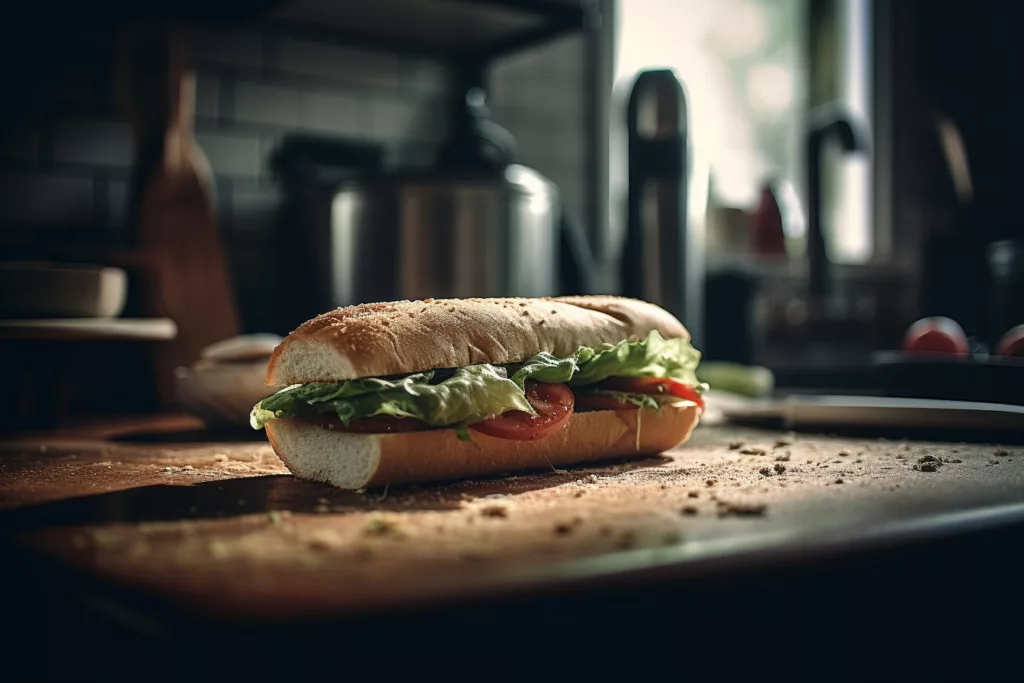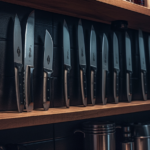Table of Contents
Building the Perfect Sandwich: Techniques and Tips for Sandwich Lovers
Are you a sandwich lover? If yes, then you know that sandwiches are not just a quick meal to grab on the go. They can be an art form, with endless possibilities for creativity, flavors, and textures. The sandwich is an incredibly versatile dish that can be simple or complex, savory or sweet, and made with a variety of bread, meats, cheeses, vegetables, sauces, and spreads. In this article, we will explore the art of the sandwich, from its history to its modern-day evolution. We will take a look at the many variations of sandwiches from around the world, their unique ingredients, and the techniques used to create them. So, whether you’re a classic PB&J lover or a fan of gourmet sandwiches, this article will give you a deeper appreciation of the humble sandwich and inspire you to create your own culinary masterpieces. So, buckle up and let’s dive into the world of sandwiches!
History of the Sandwich
The humble sandwich is one of the most popular and ubiquitous foods in the world. It’s simple, portable, and satisfying, making it a favorite choice for lunch, picnics, and on-the-go meals. But have you ever wondered where the sandwich came from?
The origin of the sandwich can be traced back to the 18th century when the Fourth Earl of Sandwich, John Montagu, ordered his cook to prepare him a meal that he could eat without having to leave the card table. The cook put some meat between two slices of bread, and thus the sandwich was born.
However, this is not the only story surrounding the origins of the sandwich. Some accounts claim that the sandwich was invented by Jewish immigrants in New York City, who would put meat between two pieces of bread to make it easier to eat while working. Others say that the sandwich was already a popular snack in the Mediterranean region, where bread was often used as a plate and eaten with toppings.
Regardless of its true origins, the sandwich has become a beloved food all around the world, with countless variations and fillings to suit every taste and culture.
Today, sandwiches are a staple in many people’s diets, from the classic peanut butter and jelly sandwich to the more elaborate gourmet sandwiches found in trendy cafes and restaurants. But no matter how it’s made or what it’s filled with, the sandwich remains a symbol of convenience, portability, and deliciousness.
So the next time you bite into a sandwich, take a moment to appreciate its rich history and the endless possibilities for creating your own unique sandwich creations.
Types of Bread
When it comes to making a sandwich, the type of bread you choose can make all the difference in the taste and texture of the final product. Here are some of the most popular types of bread used in sandwich making:
White Bread
White bread is the most common type of bread used for sandwiches. It has a soft texture and a mild flavor that won’t overpower the fillings. White bread is also very versatile and can be used for a variety of sandwich types.
Whole Wheat Bread
Whole wheat bread is a healthier alternative to white bread. It is made with whole grains and is higher in fiber and nutrients. Whole wheat bread can also have a nuttier flavor and denser texture than white bread.
Rye Bread
Rye bread is a popular choice for sandwiches, particularly those with savory fillings like pastrami or corned beef. It has a slightly sour taste and a denser texture than white bread.
Sourdough Bread
Sourdough bread is made with a sourdough starter, which gives it a tangy flavor and chewy texture. It can be a great choice for sandwiches with hearty fillings like grilled chicken or roasted vegetables.
Pita Bread
Pita bread is a flatbread that is popular in Mediterranean and Middle Eastern cuisine. It has a pocket in the middle that can be filled with a variety of fillings. Pita bread is a great choice for sandwiches with hummus, falafel, or other Middle Eastern-inspired fillings.
Baguette
Baguette is a long, thin bread with a crusty exterior and a soft interior. It is a popular choice for sandwiches with French-inspired fillings like ham and cheese or smoked salmon.
When choosing the bread for your sandwich, it’s important to consider the flavor and texture of the fillings. A hearty filling like roast beef may pair well with a denser bread like rye, while a lighter filling like cucumber and cream cheese may be better suited for a softer bread like white or whole wheat. Experiment with different bread types to find your perfect sandwich combination.
Types of Fillings
When it comes to making the perfect sandwich, choosing the right filling is essential. Here are some of the most popular types of fillings:
- Meat: Meat is a classic filling for sandwiches. Some popular options include roasted turkey, smoked ham, roast beef, and pastrami.
- Cheese: Cheese is a versatile filling that can add flavor and texture to your sandwich. Some popular options include cheddar, Swiss, provolone, and mozzarella.
- Vegetables: Vegetables are a great way to add crunch and nutrition to your sandwich. Some popular options include lettuce, spinach, tomatoes, cucumbers, onions, and peppers.
- Spreads and Sauces: Spreads and sauces can add flavor and moisture to your sandwich. Some popular options include mayo, mustard, ketchup, hummus, and pesto.
- Eggs: Eggs are a delicious filling for breakfast sandwiches. You can use scrambled eggs, fried eggs, or hard-boiled eggs.
- Seafood: Seafood can add a unique flavor to your sandwich. Some popular options include tuna, salmon, shrimp, and crab.
- Fruits: Fruits can add a sweet and tangy flavor to your sandwich. Some popular options include apples, grapes, and dried cranberries.
When it comes to choosing a filling for your sandwich, it’s important to consider your personal tastes and preferences. Don’t be afraid to experiment with different combinations to find the perfect filling for you.
Remember that the key to making a great sandwich is to balance the flavors and textures of your ingredients. By using a variety of fillings, you can create a sandwich that is both delicious and satisfying.
Tips for Making the Perfect Sandwich
Now that you know the basics of sandwich-making, here are some tips to help you create the perfect sandwich:
- Toast your bread: Toasting your bread can add flavor and texture to your sandwich. You can use a toaster, toaster oven, or even a pan on the stove to toast your bread.
- Layer your ingredients: Layering your ingredients can help ensure that each bite has a little bit of everything. Start with a spread, then add your meats, cheeses, vegetables, and extras.
- Use fresh ingredients: Using fresh ingredients can make a big difference in the flavor of your sandwich. Use fresh bread, meats, cheeses, and vegetables for the best results.
- Don’t overdo it: While it can be tempting to load your sandwich up with lots of ingredients, too many can make it difficult to eat. Stick to a few high-quality ingredients for the best results.
Conclusion
Sandwiches are more than just a quick and easy meal. They are a culinary art form that has been perfected over the centuries. From the humble beginnings of the fourth Earl of Sandwich to the modern-day variations found in delis and cafes, the sandwich continues to be a beloved food all over the world.
To truly master the art of the sandwich, one must understand the importance of bread and fillings. The right bread can make or break a sandwich, and the right filling can elevate it to new heights of deliciousness. Experimentation is key when it comes to creating unique and flavorful sandwiches.
So next time you make yourself a sandwich, take a moment to appreciate the history, the variety of bread and fillings, and the endless possibilities for culinary creativity. Whether it’s a classic grilled cheese or an exotic banh mi, the sandwich is a culinary treasure that deserves to be celebrated.









